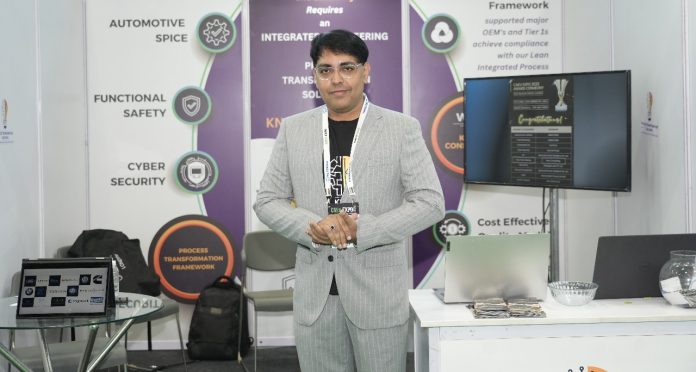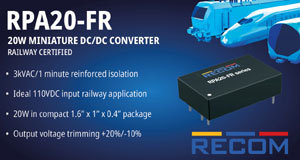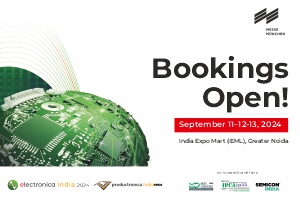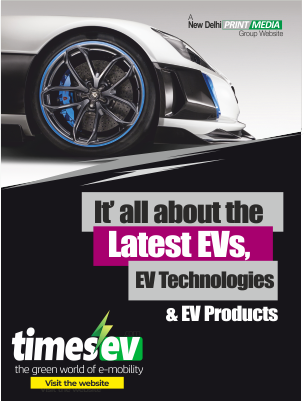In an exclusive interview with ELE Times, Mr. Ram Kumar Krish, Chief Technology Officer, at Knot Consulting, shared how the company is reshaping the future of automotive engineering through cutting-edge technologies and compliance-first innovation. From leveraging cloud-native architectures and DevSecOps to embedding Generative AI and navigating the complexities of V2X ecosystems, Knot Consulting is driving a smarter, safer, and more agile transformation across the mobility landscape. The conversation also delved into digital twins, AR/VR for compliance training, and the evolving role of cybersecurity in software-defined vehicles. Excerpts:
ELE TIMES: How is Knot Consulting leveraging cloud-native architectures to drive scalability and agility?
Ram Kumar Krish: At Knot Consulting, we realized early that compliance shouldn’t slow innovation it should accelerate it. But traditional, rigid infrastructures just don’t cut it when you’re trying to help engineering teams move fast while staying compliant with ASPICE, Functional Safety, and Cybersecurity standards.
That’s where cloud-native architecture comes in.
We’ve built our internal platforms and client-facing tools (like K-Smart) using cloud-native principles—think microservices, containerization, and DevSecOps pipelines. This helps us and our clients in three powerful ways:
- Instant Scalability:
When a customer wants to onboard 50+ suppliers for ASPICE assessments in a week, we don’t blink. Our backend scales up automatically, thanks to Kubernetes and autoscaling groups. Whether it’s one project or a portfolio review, performance stays smooth. - Agility for Engineering Compliance:
Standards like ISO 26262 or ASPICE evolve. So do customer needs. Because our systems are modular, we can roll out new compliance rulesets or updated process templates without breaking the flow—or your budget. - Global Accessibility & Collaboration:
Remote teams? No problem. Our cloud-first setup means teams across different time zones can collaborate in real time on process assessments, gap resolutions, or even audit prep—securely and without any install headaches.
Bottom line:
We use cloud-native not just for tech performance, but to help real engineers build safer, smarter systems without drowning in compliance bureaucracy. It’s about making compliance adaptive, not reactive.
ELE TIMES: How does Knot Consulting ensure robust cybersecurity frameworks are embedded within your digital solutions?
Ram Kumar Krish: Let’s be honest—most teams don’t wake up excited about threat modeling or security audits. But in today’s connected vehicle world, cybersecurity isn’t optional—it’s survival.
At Knot Consulting, we make sure that security isn’t an afterthought—it’s baked in from Day 0.
Here’s how we do it:
- Secure-by-Design Foundation
Every digital solution we build—whether it’s our K-Smart assessment platform or client-specific tools—follows Secure Development Lifecycle (SDLC) We embed threat analysis, secure coding practices, and vulnerability checks right into our DevOps pipelines. - Standards-First, Not Vendor-First
Our frameworks align with ISO/SAE 21434, UNECE R155, and TISAX—not just best practices, but regulatory must-haves. This ensures our solutions are always ready for scrutiny, whether it’s a third-party audit or a customer request. - Cybersecurity Risk Thinking Built In
We work with system and software teams to shift cybersecurity left—helping them define security goals, identify attack surfaces, and trace security controls across the V-model. Our consultants don’t just hand over reports—they co-create secure architectures. - Continuous Monitoring & Updates
The threat landscape evolves fast. That’s why we help clients implement continuous compliance monitoring, not just one-time checklists. Our digital solutions include triggers for re-evaluating risk when there’s a change—whether in software, suppliers, or vehicle functionality.
What this means:
You don’t just get a compliance checkbox. You get a digital backbone where safety and security move in lockstep—and your engineering teams can focus on building innovation, not reacting to cyber incidents.
ELE TIMES: How is Knot Consulting integrating generative AI or large language models into enterprise use cases?
Ram Kumar Krish: At Knot Consulting, we like to say: “Why wait for an audit to tell you something’s wrong—when AI can tell you in real time?”
That mindset is driving our integration of Generative AI and Large Language Models (LLMs) into the heart of compliance and engineering operations. We’re not just experimenting—we’re embedding AI into real, high-value enterprise use cases.
Here’s how:
- Intelligent Document Parsing & Gap Analysis
Ever tried comparing a 100-page supplier process doc to ASPICE or ISO 26262 requirements? Painful.
Our AI assistants can ingest technical documents and instantly flag misalignments, missing traceability, or compliance risks. What used to take days now takes minutes—with full traceability for auditors. - Natural Language Interfaces for Process Coaching
We’ve integrated LLM-powered chat interfaces into our compliance tools (like K-Smart). Engineers can now ask:
“What does SYS.3 expect in terms of test traceability?”
And get context-aware answers grounded in the ASPICE model—no jargon, no guessing.
- Predictive Compliance and Risk Insights
Our internal AI engine can learn from past projects and assessments to predict where teams are most likely to fail upcoming audits. We don’t just give you a process checklist—we help you focus where the real risk lies. - Domain-Tuned Models, Not Just Generic GPT
We don’t plug raw GPT into sensitive enterprise systems. We build secure, domain-specific AI pipelines, tuned to automotive standards and running on protected infrastructure. So you get the magic of LLMs, without the compliance nightmares.
Why it matters:
Generative AI at Knot isn’t about flashy tech—it’s about freeing up engineers, reducing rework, and giving leaders real-time clarity into compliance readiness. It’s smarter compliance, made practical.
ELE TIMES: Which emerging technologies are you currently experimenting with or recommending like blockchain, AR/VR, or digital twins?
Ram Kumar Krish: At Knot Consulting, we’re big believers in “innovation with intent.” For us, emerging technologies aren’t just buzzwords—we explore them when they solve real pain points for engineering teams dealing with complex compliance frameworks.
Here’s what we’re actively exploring and recommending:
- Digital Twins for Process Simulation & Traceability
Imagine being able to simulate your ASPICE compliance lifecycle—before your project even starts. That’s the power of digital twins.
We’re working with clients to build “Process Twins”—virtual replicas of their engineering workflows—to model dependencies, predict process gaps, and optimize traceability before any code is written. It’s especially useful in Safety-critical systems where early design decisions have a massive impact.
- AR/VR for Immersive Compliance Training
Let’s face it—most process training is still stuck in PowerPoint land. We’re experimenting with AR/VR-based onboarding, where engineers can walk through a virtual V-model or interact with a simulated ECU lifecycle—learning Functional Safety or Cybersecurity concepts through experience, not just theory.
This is especially effective in global teams where consistent understanding is critical.
- Bonus: AI-Enabled Digital Coaches (Already in Pilot)
While not “emerging” anymore, we’re doubling down on domain-tuned AI agents that act as interactive coaches for engineers during project execution. (Think: “What goes into SYS.4 verification?” → Real-time, contextual guidance.)
ELE TIMES: How do you ensure security is embedded into the software development lifecycle (DevSecOps)?
Ram Kumar Krish: At Knot Consulting, we often hear this from teams:
“We’re trying to move fast, but every security review feels like a roadblock.”
That’s exactly the mindset DevSecOps helps fix—and we’re all in.
Our approach to embedding security into the Software Development Lifecycle (SDLC) is simple: make it invisible but effective. Security shouldn’t slow you down—it should move with your code, from concept to deployment.
Here’s how we make that real for our clients:
- Threat Modeling from Day 0
We embed TARA (Threat Analysis and Risk Assessment) sessions right from system architecture and requirement phases.
Security goals are aligned with ISO 21434 and SAE J3061 before the first line of code is written—so teams don’t have to backtrack later.
- Secure Coding and Static Analysis Early
We help set up static code analysis tools (like Fortify, SonarQube, or CodeQL) directly into CI/CD pipelines. Every pull request gets checked against security rules—so vulnerabilities are caught before they reach testing.
- Automated Security in CI/CD Pipelines
From open-source dependency scanning to container hardening, our DevSecOps pipelines include:
- SAST (Static Application Security Testing)
- DAST (Dynamic Analysis)
- SCA (Software Composition Analysis)
These checks are automated, so your devs don’t have to remember every rule—the pipeline enforces it.
- Secure Build & Deployment
We enforce signed builds, access control policies, and secure artifact repositories—so no unauthorized code makes it into production. This is critical for automotive OTA (over-the-air) updates and ECU firmware security.
- Security Awareness Built into Dev Culture
We run developer workshops and live attack simulations—not boring policy slideshows. The goal: help teams think like attackers so they build like defenders.
ELE TIMES: How is Knot Consulting preparing to address functional safety challenges in highly connected ecosystems, such as V2X environments?
Ram Kumar Krish: Let’s face it—V2X (Vehicle-to-Everything) ecosystems are rewriting the rules of automotive engineering. Suddenly, your vehicle isn’t just safe on its own—it’s safe only when everything around it behaves as expected too.
At Knot Consulting, we’re helping clients shift from a “siloed safety mindset” to a “network-aware safety model.” Because in V2X, your system boundaries are fuzzy—but the risks are very real.
Here’s how we’re tackling this:
- Redefining the Item Definition for V2X Scenarios
In traditional safety engineering, defining the “item” is straightforward. But in V2X, what happens when your system behavior depends on messages from infrastructure or nearby vehicles?
We work with clients to expand their item definitions and operational scenarios to include dynamic actors—whether it’s a traffic signal, a pedestrian app, or another vehicle.
This sets the foundation for a valid HARA (Hazard Analysis and Risk Assessment) in connected contexts.
- Cross-Domain Safety-Cybersecurity Co-Engineering
A hacked message can cause a safety-critical reaction. That’s why we embed ISO 26262 and ISO 21434 together in our consulting approach.
We help engineering teams co-design safety goals and security goals—especially for:
- V2V communication protocols (e.g., misbehavior detection)
- OTA updates affecting V2X stacks
- Cooperative driving functions (e.g., platooning, intersection coordination)
- Scenario-Based Testing & Safety Assurance for V2X
Traditional test benches don’t cut it in V2X. We help clients adopt scenario-based simulations using tools like CARLA, OpenSCENARIO, and co-simulation with Safety Monitors.
Why? Because you can’t test for every vehicle—it’s about testing behavior across thousands of edge cases, including degraded comms, latency, and out-of-sequence messages.
- Safety Contracts Across Communication Boundaries
We’re guiding Tier 1s and OEMs to define “safety contracts” across interfaces—where safety relies on timely, accurate, and trusted data from other systems (like RSUs, cloud services, or other ECUs).
This includes:
- Monitoring freshness and plausibility of V2X data
- Defining fallback modes when connectivity is lost
- Ensuring system-level fault tolerance when external info is wrong








